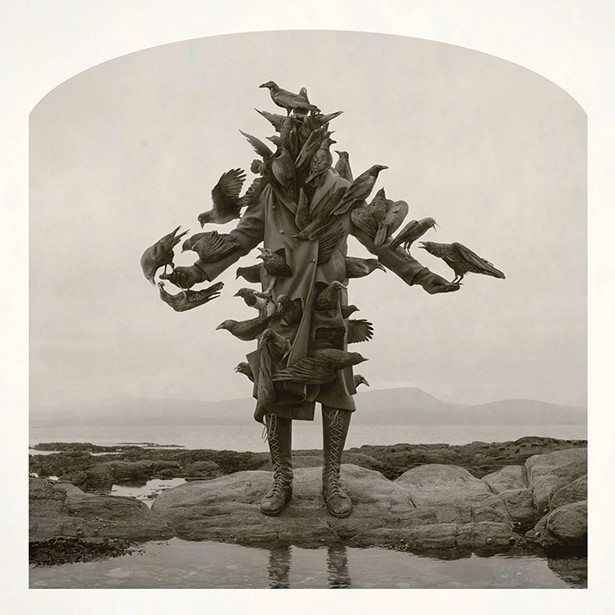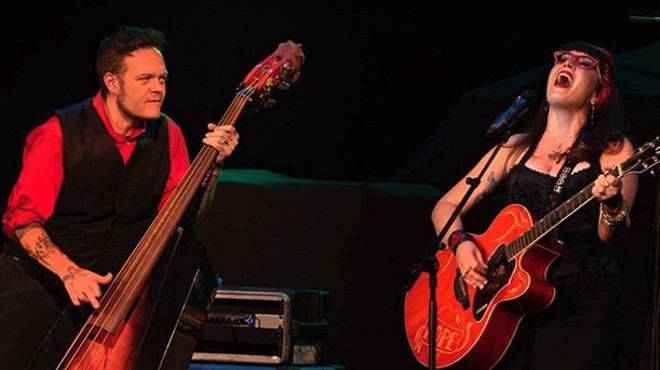"We're strange optimists, in a dark way," remarks Nicholas Kahn, one half of the artist team Kahn & Selesnick. Their new show, "Truppe Fledermaus & the Carnival at the End of the World," remains at the Tremaine Gallery at the Hotchkiss School in Lakeville, Connecticut until February 23.
When I first saw their photographs, I thought they were paintings—or Edwardian book illustrations. I was reminded of the witty, morbid drawings of Edward Gorey, collected into books such as The Gashlycrumb Tinies and The Curious Sofa: A Pornographic Tale. The arch-topped photographs seemed designed for the Victorian stereoscope, a handheld device for producing three-dimensional images by gazing through lenses at two identical photos. The subjects of the photos are often in profile, suggesting tarot cards—and, in fact, Kahn & Selesnick have designed their own tarot deck, which is on display at the Tremaine Gallery.
Also in the show are posters, writing, ceramic heads eerily lit from below, and a life-sized half-human half-bat sculpture, hanging upside-down from the ceiling. The artists' latest "novel," 100 Views of The Drowning World, which is actually 100 loose pages which may be shuffled at will, is displayed on one wall. "Truppe Fledermaus" represents approximately seven years of work. ("Fledermaus" is German for "bat," which explains the man-bat.)
In the early days of the internet, avant-gardists spoke of a "hypertext novel," a story composed by a group of writers which could branch in various directions, with no fixed beginning or end. Kahn & Selesnick have imported this concept into visual art.
But what is the "plot" of their "novel"? Pictures of lost-looking people—a man with a satchel on a deserted street, a pilgrim hoisting a massive wood-framed backpack—evoke the world refugee crisis, as well as global warming—two connected phenomena, come to think of it. Or are the protagonists on a spiritual quest? It's almost like Kahn & Selesnick are playing a game: how cleverly can they hide their politics? And how cheerful can an apocalypse be? Theirs is an anthropology of the future.
The two artists met as teenagers at Washington University in St. Louis in the early `80s, where they moved in together, both majored in photography, and began "creating worlds"—to use Kahn's phrase. The budding artists had similar influences: the writing of Jorge Luis Borges and Italo Calvino, the elegiac paintings of Casper David Friedrich, the Victorian photos of Julia Margaret Cameron. Kahn & Selesnick work in series, first setting out basic ground rules. The two share many tasks, but there's some division of labor. Selesnick makes paper items, and does most of the writing and Photoshop. Kahn produces fabric costumes, larger props, clay sculpture. "I do more of the painting, though Richard's a better painter," Kahn avers.
The artists no longer share an apartment, but over the years have lived in proximity: on Cape Cod, in Ireland, and presently in the Hudson Valley. "We're usually 35 minutes away from each other," Kahn explains. "That's the correct collaborative distance."
Kahn & Selesnick's "Truppe Fledermaus & the Carnival at the End of the World" will remain at the Tremaine Gallery of the Hotchkiss School in Lakeville, Connecticut until February 23. Hotchkiss.org/arts
—Sparrow












